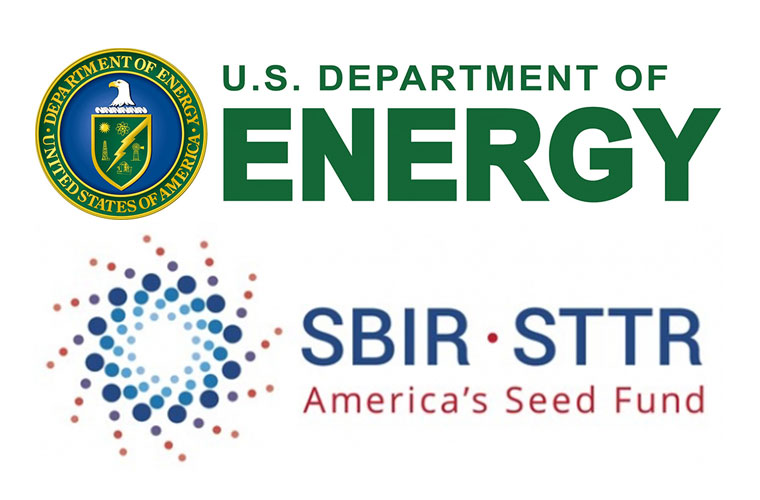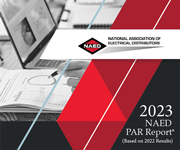As part of a recent $53 million announcement by U.S. Secretary of Energy Dan Brouillette for Small Business Innovation Research (SBIR) and Small Business Technology Transfer (STTR) research and development projects, the Office of Energy Efficiency and Renewable Energy (EERE) announced selection of 106 new projects across 26 states, totaling nearly $21.3 million in funding.
Of the 106 projects, EERE’s Building Technologies Office (BTO) will invest $4 million in 20 projects, spread across 12 states, that seek advancements in novel building energy rating delivery models, solid-state lighting improvements, efficient resilient building technologies, and advance thermal energy storage.
Small businesses across the country will receive Phase I Release 2 grants that demonstrate technical feasibility for innovations during the first phase of their research. Most Phase I awardees will receive $200,000 for less than one year. EERE is proud to support small businesses in their ongoing search for more energy-efficient building technologies and to foster technological ingenuity in the face of economic adversity.
The recipients of BTO’s SBIR/STTR Phase I Release 2 grants are listed below:
Topic 8b: Innovative Building Energy Rating Delivery Models
- Energy Futures Group of Hinesburg, Vermont will develop a more-affordable, automated, replicable approach to incorporating actionable energy information into the mortgage process and finance energy improvements for existing homes.
- Performance Systems Development of Ithaca, New York will develop and expand the range of available utility incentives that reduce the cost of obtaining an incentive while helping building owners improve the real estate value of their energy-efficient property using asset scores.
- Maalka of Brooklyn, New York will develop an energy-efficiency program management platform for cities, utilities, and private organizations that leverage DOE standards and tools to lower costs and enable data-driven insights to spur building improvements.
- Carmel Software of San Rafael, California will seek to improve the interoperability of various building energy design software tools so architects and engineers can more easily and accurately design energy-efficient buildings.
- Clearly Energy of Chicago, Illinois will develop an affordable, customizable software platform that facilitates the implementation and management of city and state building energy and efficiency goals.
Topic 8d: Novel Materials and Processes for Solid-State Lighting
- SVV Technology Innovations of Elk Grove, California will develop and demonstrate a new approach for making flexible large-area and flare-free lighting panels that use high-efficiency light-emitting diodes (LEDs) and inexpensive plastic sheets.
- Microcontinuum of Cambridge, Massachusetts will use a decal transfer process to fabricate a new, higher-performance, and more-affordable substrate that integrates every requisite OLED component into a novel, transparent thin-film metal mesh conductor.
- Voxtel of Beaverton, Oregon will seek to develop a new commercial-scale inject-printed additive manufacturing process to fabricate LEDs with optics (nanocrystals) that improve light quality and efficiency.
- Glint Photonics of Burlingame, California will develop a new type of lighting fixture that can be easily and inexpensively customized to produce almost any needed light distribution.
- Fluency Lighting Technologies of Santa Barbara, California will develop a novel and more robust encapsulation material and processing method capable of withstanding more extreme operating conditions. If successful, these advancements will increase the efficiency and lifetime of LEDs while lowering manufacturing costs through wafer-scale packaging.
- Kebotix of Cambridge, Massachusetts will develop a multi-level smart-throughput screening of organic molecules and aggregates to identify blue emitters with reduced quenching and high efficiency.
Topic 8c: Efficient Resilient Building Technologies
- Altex Technologies Corp. of San Jose, California will develop a novel, recuperator-less natural gas-driven cogeneration system with the potential to reduce emissions, provide resiliency to electrical outages, and have a payback period of 3 to 5 years.
- Active Energy Systems Inc. of Knoxville, Tennessee will seek to enable a lower-cost, more-efficient thermal energy storage method to provide long-duration resilient cooling when the electric grid is down.
- Grid Fruit, LLC of Pittsburgh, Pennsylvania will develop an integrated hardware and software technology–a non-invasive automation solution that improves both energy resilience and energy efficiency of centralized and single condensing commercial refrigeration systems.
Topic 16a: Advanced Thermal Energy Storage In Partnership with AMO
- TCPoly of Atlanta, Georgia will develop high-thermal-conductivity PCM-infiltrated 3D printing filaments for advanced thermal energy storage.
- Tetramer Technologies of Pendleton, South Carolina will develop a new approach to generating encapsulated inorganic phase-change materials (PCMs) to address the challenges associated with thermal conductivity, cycle life, and subcooling.
- Air Dynamics of York, Pennsylvania will develop a grid-responsive and more manufacturable thermal energy storage system that readily connects a corrosion-resistant, salt hydrate-based phase change material to an HVAC system.
- InnoSense of Torrance, California will create a new textile composite building material featuring cooper-coated layers that can be applied in building applications to increase thermal conductivity for greater building energy management capabilities.
- PolyMaterials App of Tampa, Florida will develop new, low-cost scalable encapsulation techniques for building-integrated salt-hydrate PCMs to improve low thermal conductivity, phase separation, and subcooling.
- Materials Modification of Fairfax, Virginia will use employ a novel approach, hydrogel encapsulation, to alleviate the phase separation and subcooling challenges of salt-hydrate PCMs.






